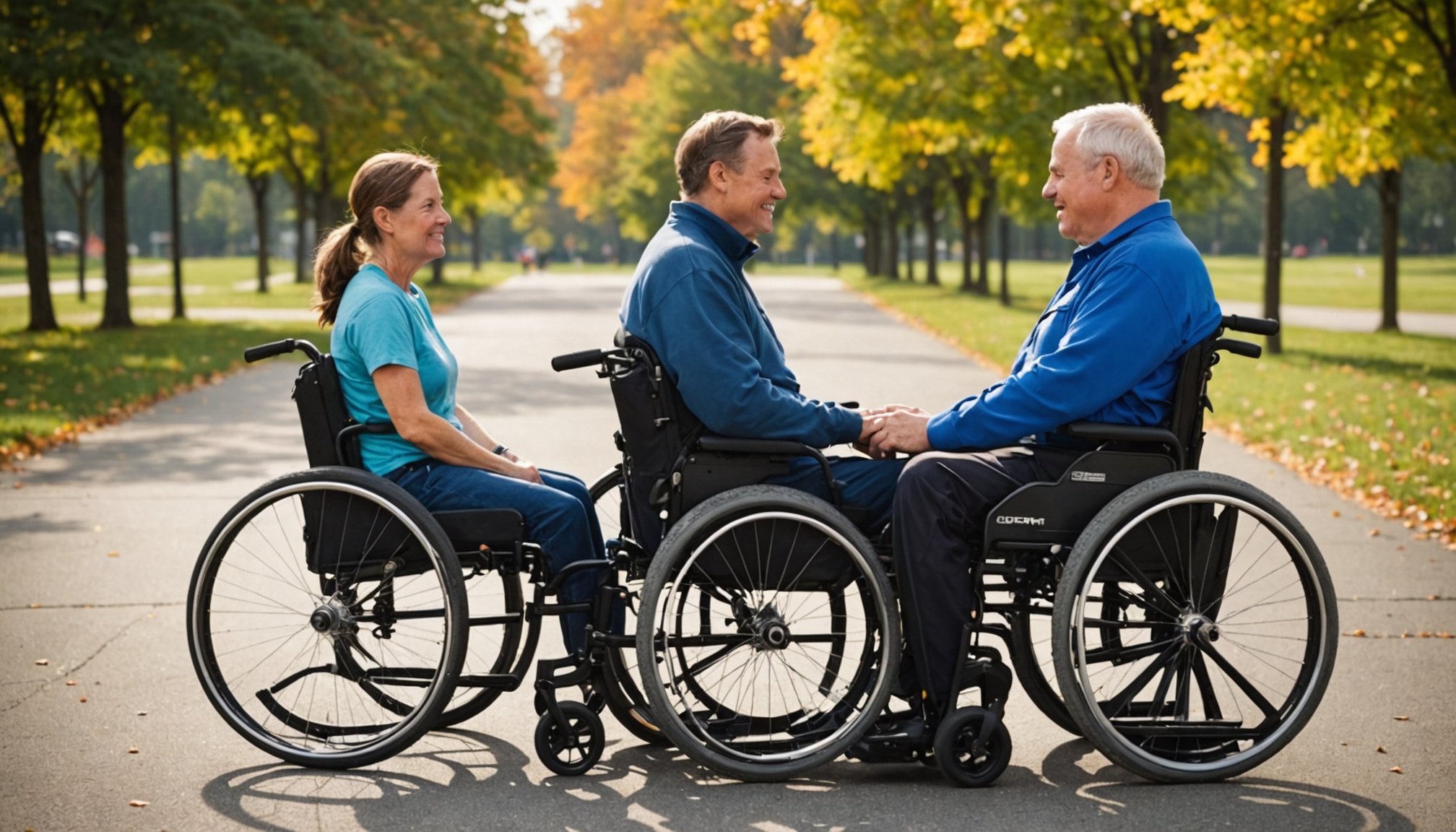Understanding Adaptive Equipment
Adaptive equipment plays a vital role in enhancing the quality of life for individuals with disabilities. These assistive technologies range from simple to complex devices designed to support independence. At its core, adaptive equipment encompasses any product or tool that enables individuals to perform tasks they might otherwise find challenging. For example, mobility aids like wheelchairs and walkers help those with physical limitations move around more freely. Similarly, communication devices assist individuals with speech impairments in expressing themselves effectively.
Various types of independence tools cater to different needs. For mobility, choices include scooters and canes; for daily living, aids like adapted utensils and reachers are popular. Meanwhile, for communication, there are advanced software solutions and devices that convert text to speech. With such a vast array of options, selecting the right equipment is crucial. The ideal choice should align with the user’s specific needs while empowering them to achieve greater autonomy.
Also read : Empowering women: proven techniques to boost bone density during menopause – your complete guide
Selecting appropriate adaptive equipment requires a comprehensive understanding of the individual’s needs and preferences. Consulting healthcare providers or occupational therapists can provide valuable insights into choosing equipment that will best enhance the user’s life and meet their unique requirements.
Tips for Selecting Adaptive Equipment
When selecting adaptive tools, it is crucial to assess the individual’s needs and capabilities thoroughly. Tailoring equipment to fit these aspects ensures that the user’s ability to perform tasks is optimally supported. This can be achieved through comprehensive evaluations conducted by healthcare professionals who understand the specific requirements of the user.
In the same genre : Embracing vitality: explore the life-enhancing benefits of tai chi for older adults
Involving users in the decision-making process not only empowers them but also ensures the selected equipment aligns with their preferences and lifestyle. Allowing users to test various options can provide valuable insights, leading to a more informed choice that maximises usability and comfort.
Additionally, it is essential to consider environmental factors when choosing equipment. The user’s daily environment – whether home, work, or community settings – may present unique challenges or opportunities that need to be addressed. Factors like space, terrain, and accessibility should be evaluated to determine the most suitable equipment that blends seamlessly into the user’s surroundings.
By focusing on a user-centered design, creating personalized solutions becomes more attainable, promoting greater autonomy and satisfaction. Thoughtful selection ensures that adaptive equipment not only meets practical needs but also fosters a sense of independence and confidence.
Popular Adaptive Equipment Options
Choosing the right adaptive tools can greatly enhance daily life for individuals with disabilities. Various adaptive equipment is available to cater to specific requirements, offering a range of mobility aids, daily living aids, and communication tools. Let us explore these crucial categories.
Mobility Aids
These tools are pivotal for individuals seeking independence in movement. Common mobility aids include walkers, wheelchairs, and scooters. Each functions differently to accommodate various mobility levels. Walkers offer stability; wheelchairs provide comfort for those with limited leg function; scooters are ideal for more enhanced autonomy in mobility. Users should consider factors like user-friendliness, environmental compatibility, and financial aspects before choosing.
Daily Living Aids
These devices empower users in everyday tasks such as cooking, cleaning, and personal care. Adapted utensils and reachers, for example, facilitate independent cooking and cleaning, while bath chairs and dressing tools add safety in personal care routines. Adjusting the home environment for these aids can further promote usability and independence.
Communication and Technology Tools
Assistive technology plays a significant role in communication for individuals with speech impairments, offering devices that convert text to speech. This enhances autonomy by allowing expressions in diverse settings. Training resources are crucial for users and carers to maximise potential benefits of these technologies.
Overcoming Barriers to Equipment Usage
Individuals using adaptive equipment often encounter barriers that can hinder their effectiveness. Accessibility issues—such as difficult-to-navigate environments or inconvenient control placements—can limit the potential of these solutions. Furthermore, lack of familiarity or training in assistive technology frequently presents a challenge, leaving users and caregivers unsure about optimal use.
To address these concerns, it is vital to create an accommodating atmosphere. Consider employing simple modifications to physical spaces, like widening doorways or clearing pathways, to promote smoother transitions and effective use of equipment. Technology should also be designed with user-friendly interfaces that facilitate intuitive operation, minimising learning curves.
Training and support are essential for overcoming operational obstacles. Providing comprehensive training resources allows users and caregivers to develop confidence in equipment handling and troubleshooting. Programs might include workshops, hands-on learning sessions, or online courses, all tailored to different learning preferences.
Ongoing assistance from professionals and peers enhances the user experience, leading to a successful, independent lifestyle. Constant support ensures that users can fully integrate independence tools into their daily routines, resulting in greater empowerment and autonomy.
Success Stories and Community Support
In the realm of adaptive equipment, stories of empowerment through stories highlight the transformative impact of tailored solutions. By sharing individual journeys, we gain insights into how independence tools have improved lives. Take John, for instance—a wheelchair user who, with the aid of a customised mobility solution, enjoys greater autonomy in daily activities. His experience reflects the profound difference that the right adaptive equipment can make.
Community resources are crucial in facilitating these success stories. Various organisations provide support networks pivotal to user empowerment. These entities offer assistance in areas such as equipment selection, financial aid, and training. For instance, local disability groups often organise workshops to educate users on effectively utilising their tools.
Connecting with community resources can significantly bolster the adaptive equipment experience. Many communities have networks that not only offer practical assistance but also emotional support, fostering a sense of belonging and shared mission. To tap into these, explore local directories, social media groups, or community centres. By leveraging these support networks, users can enhance their equipment usage, enjoy increased independence, and contribute to an inclusive society.











